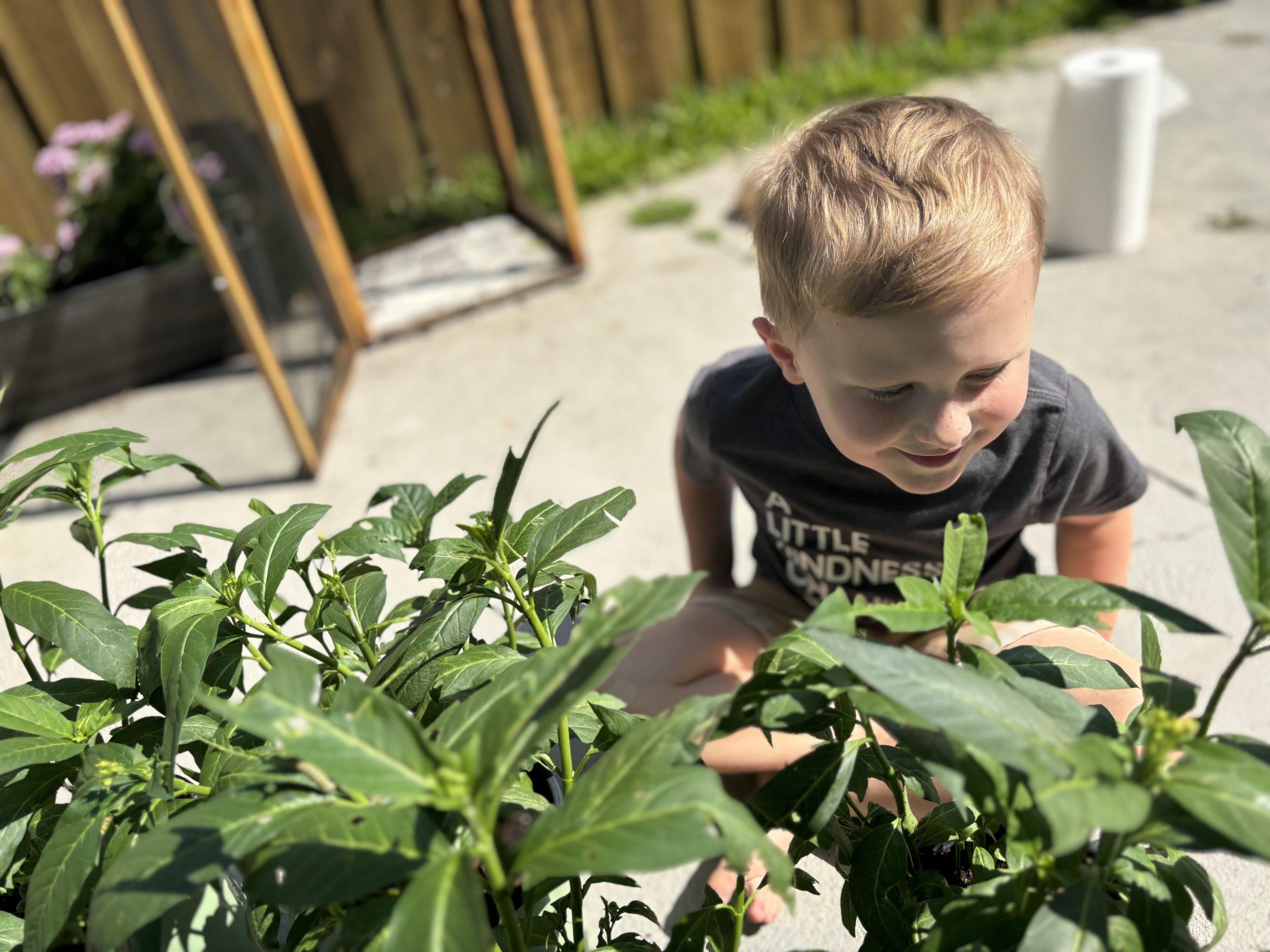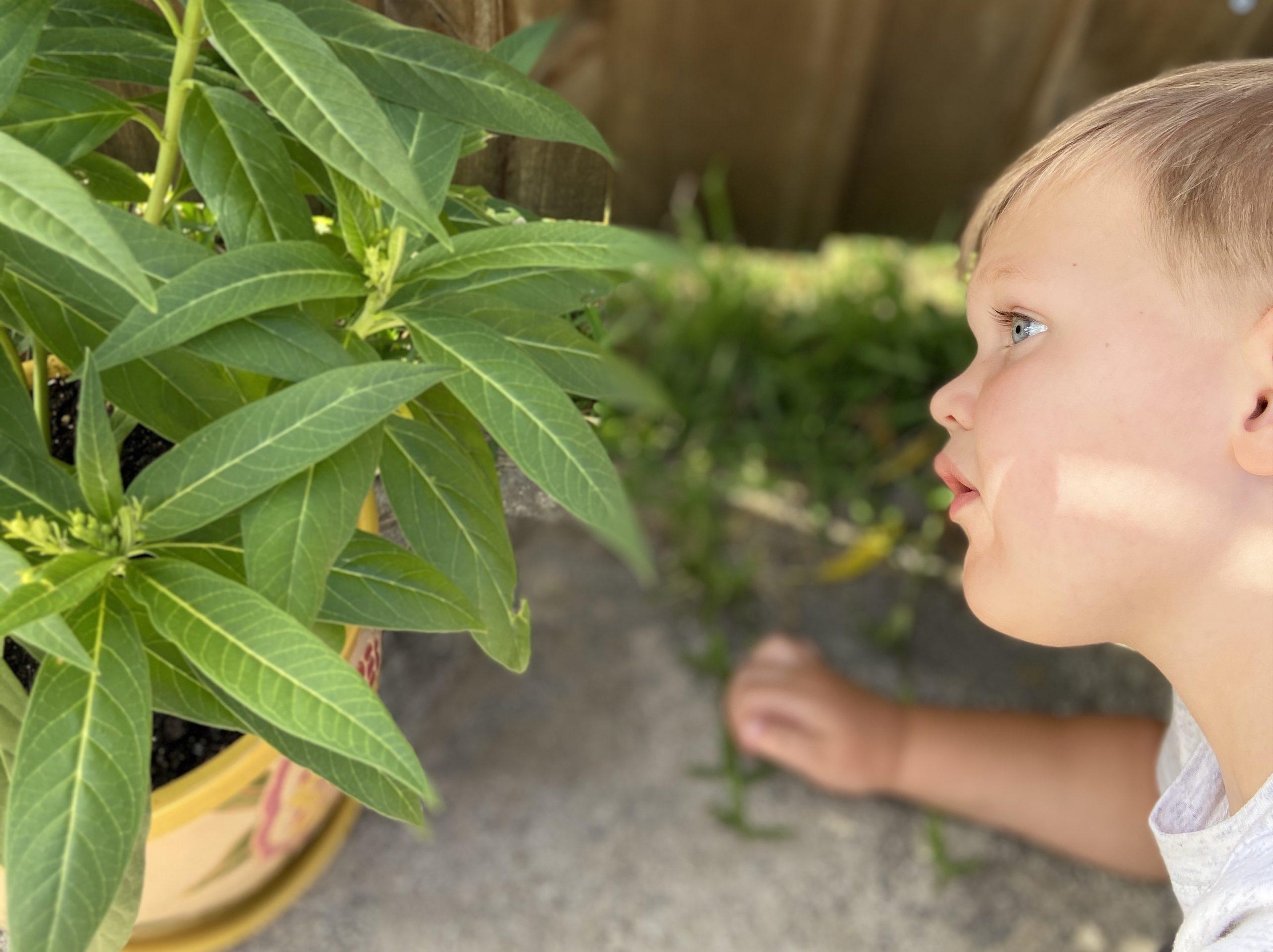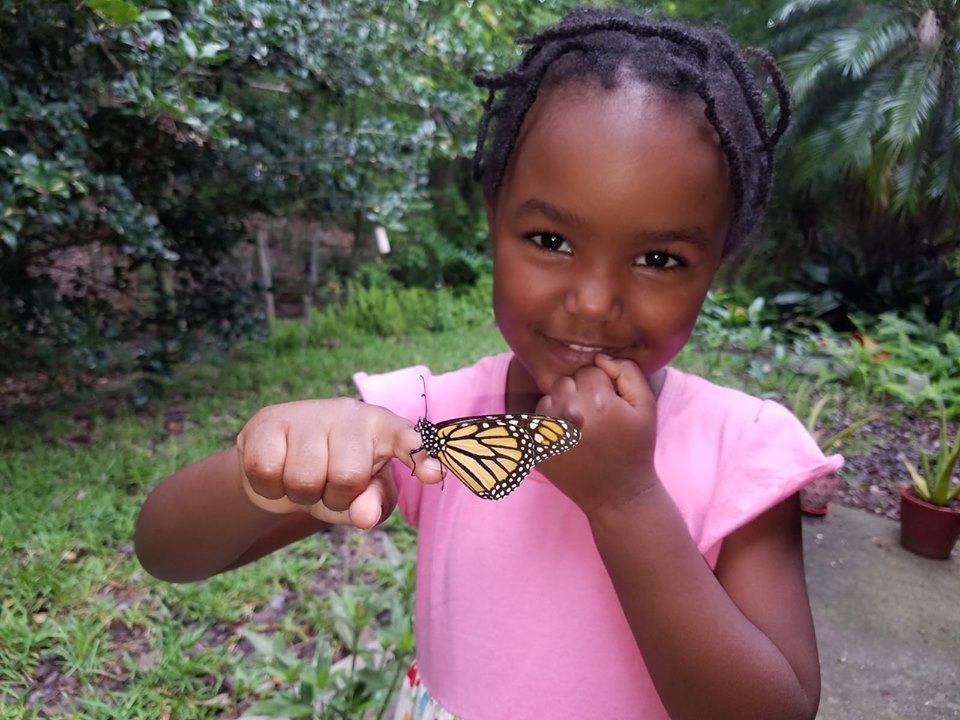 I’ve always had a special relationship with butterflies — they adorned my clothes, my jewelry, my bedroom, and the margins of my homework throughout my teenage years. After my mom died of cancer, my grieving dad took me to get my first tattoo at the age of 16: a small butterfly on my abdomen, in her memory. Whenever a monarch crosses my path, I am reminded of my mother’s beauty and soft-spoken nature — and her fleeting yet poignant time on earth. Twenty-five years later and somehow my butterfly tattoo has survived two pregnancies and a few extra pounds; she still looks beautiful.
I’ve always had a special relationship with butterflies — they adorned my clothes, my jewelry, my bedroom, and the margins of my homework throughout my teenage years. After my mom died of cancer, my grieving dad took me to get my first tattoo at the age of 16: a small butterfly on my abdomen, in her memory. Whenever a monarch crosses my path, I am reminded of my mother’s beauty and soft-spoken nature — and her fleeting yet poignant time on earth. Twenty-five years later and somehow my butterfly tattoo has survived two pregnancies and a few extra pounds; she still looks beautiful.
READ: Easy Ways to Save Monarch Butterflies From Extinction
When I heard that monarchs were added to the endangered species list in 2021, I knew I had to act. They can’t go extinct, not on my watch. And so began my journey of raising monarchs with my two sons, a nature-filled endeavor we look forward to every spring and summer. Here are a few tips on raising monarchs, from tiny eggs to hungry caterpillars to beautiful butterflies! The entire process takes about four weeks.
 Step One: Purchase your milkweed and supplies.
Step One: Purchase your milkweed and supplies.
Purchase 2-3 milkweed plants from your local nursery (avoid big-named retailers and chains as they typically use pesticides on their plants) and a screened-in butterfly terrarium or cage like this one. We like to get our milkweed from Plant Ranch Nursery (on Beach Blvd.); I always call first to make sure they’re stocked. Place one milkweed plant outside in the open and the others inside the terrarium (also outdoors) — this way the plants can flourish in the sunlight and you don’t get an overabundance of butterfly eggs! Note: After using a pop-up cage for a couple of years, my husband later constructed a cage for me as a Mother’s Day gift made of wood and screened siding with a little latch on the door.
 Step Two: Keep an eye out for butterfly eggs.
Step Two: Keep an eye out for butterfly eggs.
Check the plant for monarch eggs every day or two. Once you see some eggs (they look like small white bumps on the leaf), place the entire plant inside the cage. The eggs will hatch in approximately 5 days! In the meantime, don’t forget to water your milkweed plants.
 Step Three: Enjoy your hungry caterpillars.
Step Three: Enjoy your hungry caterpillars.
Once hatched, caterpillars will eat milkweed nearly around the clock for two weeks. One average-sized milkweed plant can feed about 4-5 caterpillars. It is safe to hold the caterpillars on occasion, just be gentle! Otherwise, keep them in the closed cage. Note: Caterpillars poop A LOT, so periodically shake out or clean out the bottom of the cage.
READ: A Beautiful Distraction: The Benefits of Raising Butterflies With Your Children
Step Four: Look out for the chrysalis.
Once they are ready, the caterpillar(s) will find a solid leaf or even trek to the top of the cage to form their chrysalis, which looks like a green oval. This is where they make their transformation. Fun fact: Moths form a cocoon. Butterflies form a chrysalis! This chrysalis period will last 1-2 weeks.
 Step Five: Time to become a beautiful butterfly!
Step Five: Time to become a beautiful butterfly!
Once the chrysalis darkens in color, it will be almost time for the butterfly to emerge. This happens within seconds. The butterfly will need a couple of hours to dry its wings (never touch their wings) before taking its first flight. After a few hours, you can open the cage door to release the butterfly, or gently let it crawl on your finger and release it to the sky! Check out a few additional tips on raising monarchs here.














